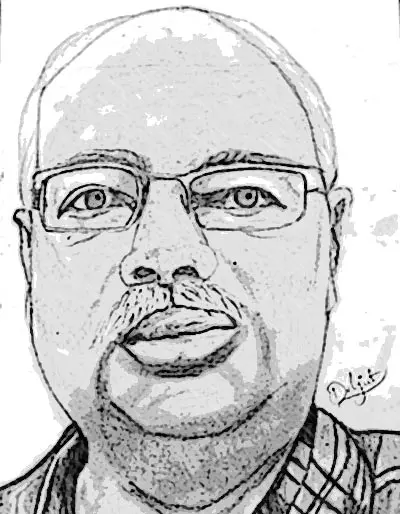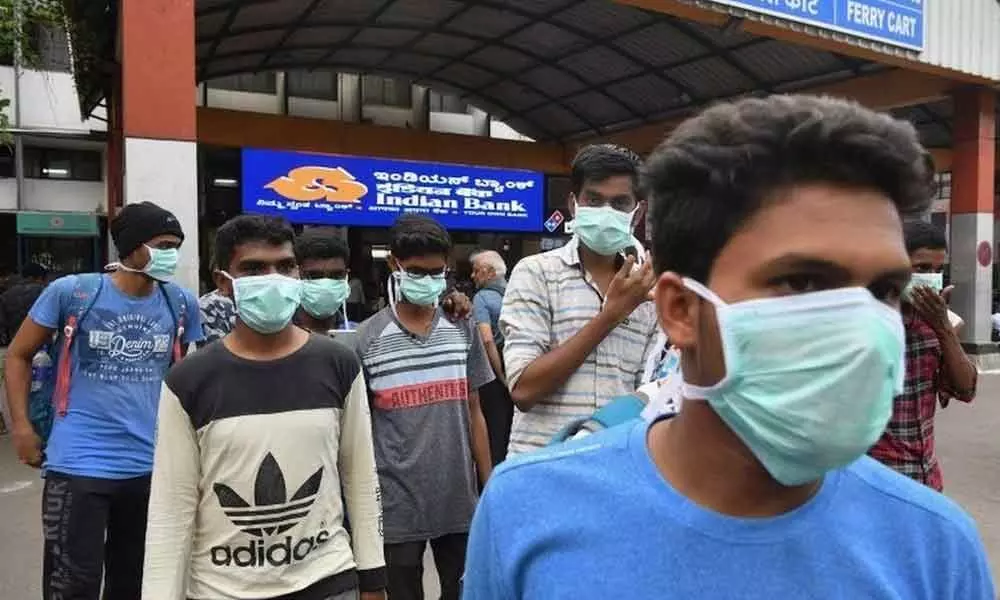Live
- Additional Collector Conducts Surprise Visit to Boys' Hostel in Wanaparthy
- Punjab hikes maximum state-agreed price for sugarcane, highest in country
- Centre okays PAN 2.0 project worth Rs 1,435 crore to transform taxpayer registration
- Punjab minister opens development projects of Rs 120 crore in Ludhiana
- Cabinet approves Atal Innovation Mission 2.0 with Rs 2,750 crore outlay
- Centre okays Rs 3,689cr investment for 2 hydro electric projects in Arunachal
- IPL 2025 Auction: 13-year-old Vaibhav Suryavanshi becomes youngest player to be signed in tournament's history
- About 62 lakh foreign tourists arrived in India in 8 months this year: Govt
- IPL 2025 Auction: Gujarat bag Sherfane Rutherford for Rs 2.60 cr; Kolkata grab Manish Pandey for Rs 75 lakh
- Assam CM meets Governor, cabinet expansion on the cards
Just In
Challenges post corona world has to face


The impact of Covid-19 on Indian pharma has so far been limited due to existing inventory levels across supply chain. The government is working out...
The impact of Covid-19 on Indian pharma has so far been limited due to existing inventory levels across supply chain. The government is working out policies to help the companies which manufacture pharmaceutical ingredients domestically. The government may also have to go in for restructuring its present plans or bring reforms in sectors like urban infrastructure, affordable housing, and greater investment in health sector. The health insurance sector could see better days as people would now start looking more towards health insurance. One thing people will have to be prepared is to learn to survive with deferred payment of wages, increase in prices particularly the food sector if the harvest and supply is not taken proper care or if the governments fail to maintain strict vigil.
India is likely to see more diversification in all sectors in the post corona period which may begin around mid-May. The re-start would be very gradual. Every sector would be going in for alternate plans to survive in market and also to recoup the losses it had suffered due to slowdown and knockdown of economy during the period of crisis in the form of corona pandemic. It would take at least six months before the economy picks up pace.
In view of this, India may see use of a lot more technology being deployed to ensure that the supply chain is back to normalcy. Greater digitalisation, more use of data analytics, working out best and dynamic delivery options would become essential. In addition, risk management tools will be increasingly used.
The present lockdown has seen people working from home, school kids having digital classes and doing homework though app. Similarly, both officials and politicians have been using different technologies to hold meetings. In the post corona period, lot more technology is likely to be used. Experts are optimistic that use of robotics and Artificial Intelligence will see upturn. China where the Covid-19 had its genesis has already deployed AI both to forecast and manage the pandemic and use robots on large scale for tasks like cleaning and sterilising. Healthcare industry may also go in for health apps to identify symptoms and track people movement to follow chain infections.
According to a study by Mckinsey, the economy could contract sharply by around 20 percent in the first quarter of fiscal year 2021, with –2 to –3 percent growth for fiscal year 2021.
If the virus flares up a few times again during the year, necessitating more lockdowns, he says there could be even deeper economic contraction of around 8 to 10 percent for fiscal year 2021. More lockdowns could mean even greater reluctance among migrants to resume work and ensuring a much slower rate of recovery. Some others feel that tech companies will not trade as much in the near-term in some areas. There could be a maximum growth rate of two percent.
Mckinsey also predicts that corporate and micro, small, and medium-size-enterprise (MSME) failure, nonperforming loans (NPLs) in the financial system could rise by three to four percentage points of loans. The amount of government spending required to protect and revive households, companies, and lenders could therefore be in the region of 6 lakh crore Indian rupees (around $79 billion), or 3 percent of GDP. The livelihood of about eight million workers could be affected.
Several small and medium enterprise, aviation, textiles, power and construction loans will slip into default though the percentage may vary. The areas which are likely to be adversely affected are food and utilities, travel, transport, textiles, hotel, clothing and furnishings as consumption is likely to drop heavily.
The government of India has been announcing several measures and will have no option but to come with more announcements to reduce the NPL impact and ease distress and prevent solvency arising from stressed companies. What is required, to quote Mckinsey is to boost household demand. "Consideration could be given to an income-support programme in which the government both pays for a share of the payroll for the 60 million informal contractual and permanent workers linked to companies and provides direct income support for the 135 million informal workers who are not on any form of company payroll, concessions for home buyers, such as tax rebates for a time-bound period, could stimulate the housing market and unlock the job multiplier," Mckinsey adds.
The impact of Covid-19 on Indian pharma has so far been limited due to existing inventory levels across supply chain. The government is working out policies to help the companies which manufacture pharmaceutical ingredients domestically. The government may also have to go in for restructuring its present plans or bring reforms in sectors like urban infrastructure, affordable housing, and greater investment in health sector. The health insurance sector could see better days as people would now start looking more towards health insurance.
One thing people will have to be prepared is to learn to survive with deferred payment of wages, increase in prices particularly the food sector if the harvest and supply is not taken proper care or if the governments fail to maintain strict vigil.
The industry that is among the worst affected is tourism industry. It is now reeling under great financial strain. Lockdowns, travel restrictions, cancellation of trains and airlines have pushed the industry into immediate crisis. Those in B2B business, hotels, tour operators are almost in a very bad shape. The industry however has resolved that they should go in for sharing of information, encourage mutual collaboration, go in for cut in profits and remain united so that the industry can bounce back at least by winter season. The Covid-19 pandemic hit them virtually below the belt at it struck when they were to see the best peak travel season. The industry, they feel needs to come with innovative ideas, stay positive. They feel that lifting of lockdown will not see sudden spurt in spending. No one would be venturing out till they are sure that the world is safer place now. The possibility of a start to re-bounce may begin from Dussehra time as the economy may start looking up from that period.
The airlines too seem to be working out new protocols in the post lockdown scenario. Apart from asking passengers to report two hours prior to the departure time, they would be sanitising all aircrafts and maintain social distancing by decreasing the crowds at airports and making in mandatory for fliers to use masks, gloves and sanitisers and screen all passengers with thermal temperature scanners. Travel industry sources say that airlines will also keep a vacant seat between every two passengers which means the cost of tickets would go up as the occupancy would go down by 50 percent.
April to June in India is the peak season where farm activity takes place. This is the time when Rabi is harvested and from June rice pulses, sugarcane and cotton crops are sown. The lockdown at such crucial period had hit this sector badly. The Central and the State governments need to work out strategies for storing and positioning seeds and fertilisers and see that the Kharif operations do not get affected.
One of the leading producers of Telugu film industry, Suresh Babu predicts that the industry would sooner than later go in for innovations. With lockdown for nearly 40 days, all producers, distributors and exhibitors are going to suffer huge losses. It will take years for the industry to recover the losses. Hence it will be forced to look towards other options like OTT.
OTT stands for "over-the-top" and refers to the productised practice of streaming content to customers directly over the web. It represents the future of entertainment — one that is already unfolding. Next six months are going to be a real testing time for Indian economy. What is required is resilience, patience, adopting new methodologies to overcome the worst ever crisis.

© 2024 Hyderabad Media House Limited/The Hans India. All rights reserved. Powered by hocalwire.com






